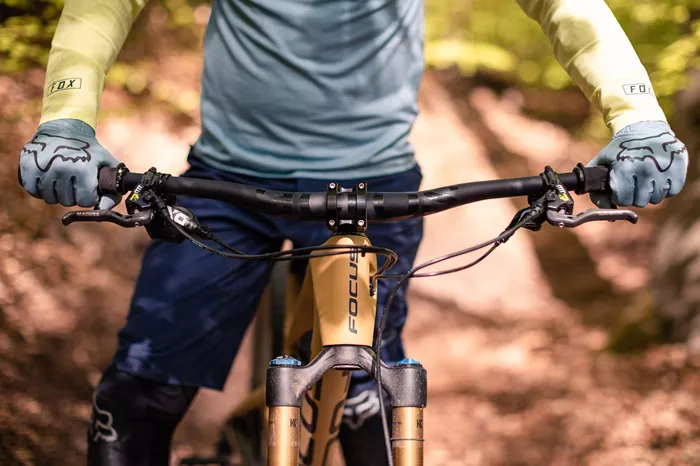Mountain biking is an exhilarating sport that combines adventure, fitness, and the great outdoors. It offers a unique way to explore nature while providing a fantastic workout. Whether you are a seasoned cyclist or a complete beginner, mountain biking can be an incredibly rewarding experience. In this article, we will guide you through everything you need to know to start mountain biking, from choosing the right bike to understanding essential skills and safety measures.
The Allure of Mountain Biking
Mountain biking is not just about riding a bike; it’s about immersing yourself in nature. Riders often find themselves on scenic trails surrounded by trees, mountains, and rivers. The thrill of navigating rugged terrains and conquering challenging trails is unmatched. For many, mountain biking becomes a way of life, fostering a sense of community among riders who share similar passions.
Choosing The Right Mountain Bike
Selecting the right bike is crucial for an enjoyable mountain biking experience. Here are some key factors to consider:
1. Bike Types
Hardtail: A hardtail bike has a front suspension but no rear suspension. It is lighter and more efficient for climbing but may be less comfortable on rough descents.
Full Suspension: These bikes have both front and rear suspension, providing better control and comfort on rough trails but generally weighing more.
2. Frame Size
Choosing the correct frame size is essential for comfort and control. Most manufacturers provide sizing charts based on your height and inseam length. A properly sized bike will enhance your riding experience significantly.
3. Wheel Size
Mountain bikes typically come with three wheel sizes: 26-inch, 27.5-inch (650b), and 29-inch. Larger wheels roll over obstacles more easily but may be less maneuverable in tight spaces.
4. Budget
Mountain bikes can range from a few hundred to several thousand dollars. Determine your budget before shopping, keeping in mind that investing in quality gear can enhance your riding experience.
5. Test Ride
Whenever possible, test ride different bikes before making a purchase.
This will give you a feel for what works best for you in terms of comfort and handling.
Essential Gear for Mountain Biking
In addition to a good bike, having the right gear is vital for safety and performance:
1. Helmet
A high-quality helmet is non-negotiable in mountain biking. Look for one that meets safety standards and fits comfortably.
2. Gloves
Riding gloves provide grip on the handlebars and protect your hands in case of falls.
3. Clothing
Wear moisture-wicking clothing that allows for freedom of movement. Padded shorts can add comfort during long rides.
4. Shoes
Choose shoes with good grip that can accommodate clipless pedals or flat pedals depending on your preference.
5. Hydration Pack or Water Bottle
Staying hydrated is crucial during rides, especially in warmer weather.
6. Repair Kit
Carry a basic repair kit that includes tire levers, a spare tube, a pump or CO2 inflator, and multi-tools for quick fixes on the trail.
Learning Basic Skills
Before hitting the trails, it’s important to develop fundamental biking skills:
1. Braking Techniques
Learn how to use both brakes effectively without skidding or losing control. The front brake provides most of your stopping power, but using both brakes together is essential for maintaining balance.
2. Body Positioning
Your body position affects your balance and control on the bike:
Keep your elbows bent.
Lower your center of gravity by bending your knees.
Shift your weight forward when climbing and backward when descending.
3. Cornering
Practice leaning into corners while maintaining speed. Look ahead to where you want to go rather than directly at the ground.
4. Climbing Techniques
When climbing steep hills:
Maintain a steady cadence.
Shift gears early to avoid losing momentum.
Use your body weight to help push the bike forward.
5. Descending Skills
Descending requires confidence:
Keep your weight centered over the bike.
Use both brakes lightly to control your speed.
Look ahead to anticipate obstacles.
Safety Considerations
Safety should always be a priority when mountain biking:
1. Know Your Limits
Start with easier trails as you build confidence and skill before tackling more challenging ones.
2. Ride with Others
Whenever possible, ride with a friend or group for added safety in case of accidents or mechanical issues.
3. Be Aware of Your Surroundings
Always stay alert while riding; watch out for other cyclists, hikers, wildlife, and changing trail conditions.
4. Wear Protective Gear
In addition to a helmet, consider knee pads or elbow pads for extra protection against falls.
Conclusion
Starting mountain biking is an exciting journey filled with adventure and personal growth. By understanding the basics—from choosing the right bike to developing essential skills—you can set yourself up for success in this thrilling sport. Remember that practice is key; don’t be discouraged by initial challenges as every rider was once a beginner too! Embrace the learning process, enjoy the ride, and immerse yourself in the beautiful landscapes that mountain biking has to offer!
Related topics:
- How to Get Involved in Mountain Biking: A Step-by-Step Guide
- How to Prevent Hand Numbness While Mountain Biking
- How to Get Stronger Legs for Mountain Biking?

